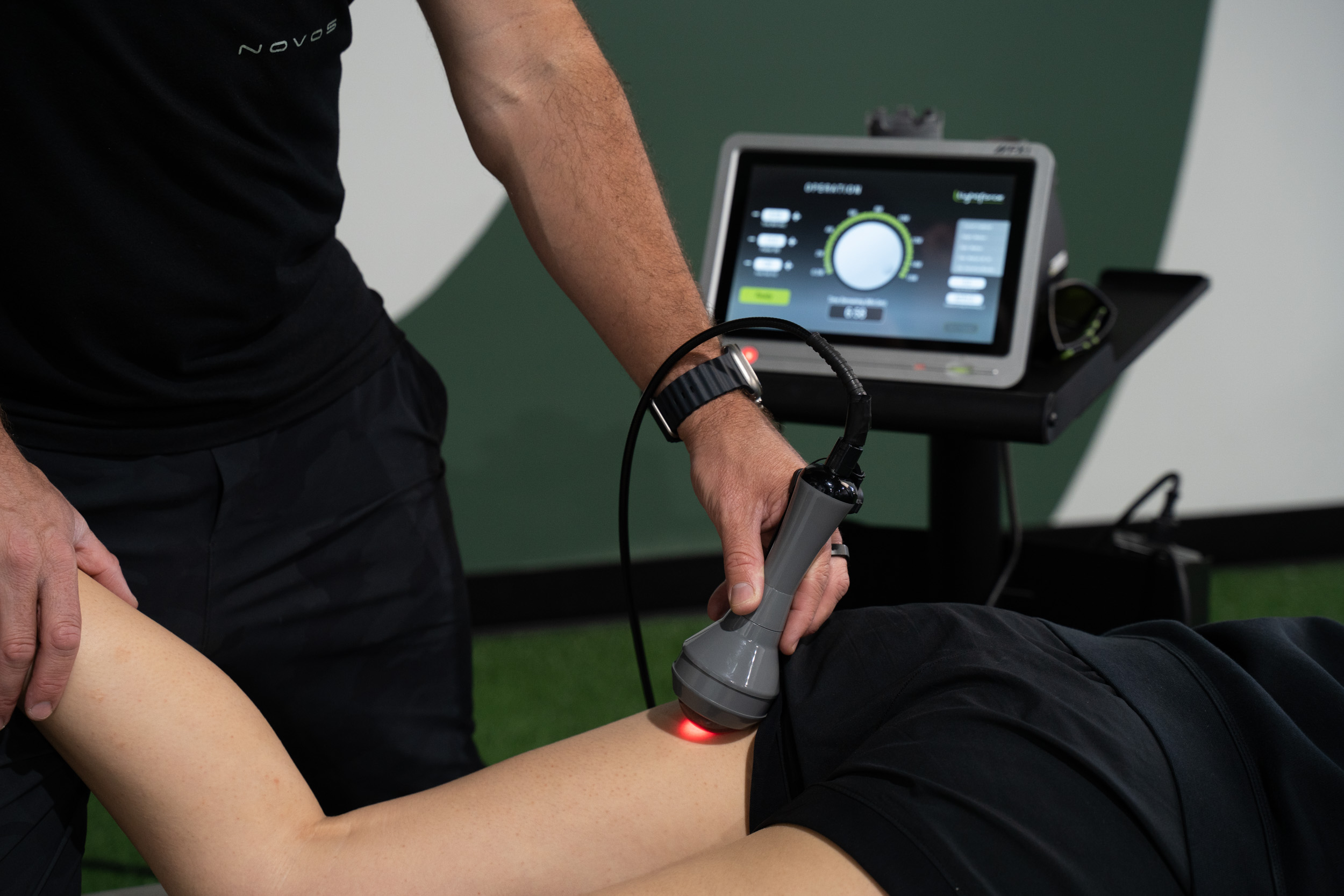Hamstring strains are notoriously difficult to heal and are one of the most common injuries within sports that require high-speed running. At the amateur level 16% of athletes will experience a hamstring strain injury (HSI) in a given season, 22% at the elite level. If you have a hamstring strain injury (HSI) high powered laser therapy can dramatically shorten your recovery time
With the standard return to play policy (RTP) of 11-25 days post HSI there is a documented 25% recurrence of injury at the same location within the first seven days. There is an additional 9% of reinjury over the duration of the same sport season. A four-week recovery period for grade 1 and grade 2 hamstring strains has the lowest rate of recurrence in the same sport season and is biologically sound. It takes into account the full biological process of tissue repair, summarized below. Unfortunately, for many athletes, taking four weeks off would prevent desirable team commitments, sponsorships, or favorable contracts.
High powered laser therapy dramatically reduces the HSI recovery time by modifying the biological processes of tissue repair.
There are four phases of tissue repair after an injury like a hamstring strain. Muscle degeneration and inflammation, muscle regeneration, scar tissue formation, and tissue remodeling. This process takes a minimum of 28 days. It can take longer depending on the unique physiology of the injured person.
A high powered (or class IV laser) speeds up the body’s natural repair process. After 3 days of daily low level laser exposure (50 milliwatts, equivalent to .05 watts) muscle cells showed a 144.7% increase in proliferation due to increased mitochondrial activity, an increased production of type III collagen fibers, and a 5x increase in type I collagen fibers. Why does this matter?
In the muscle degeneration phase the gap between the two ends of muscle fiber tears fills with blood creating a hematoma. The torn fibers die and release biochemicals which create a local inflammatory response and in turn attract immune cells to the injury site.
In the muscle regeneration phase, roughly a week post injury, the ruptured muscle and nerve fibers begin to regrow.
Then, connective scar tissue begins to form a bridge between the torn sections. The immune system breaks down the hematoma. The body uses this blood to form fibrin and fibronectin, two tissue types which form an anchoring matrix for scar tissue. Then the body lays down elastic proteins within this matrix, like tenascin-C. These base layers of the scar tissue matrix provide low level tensile strength but nowhere near enough to withstand full force contraction. The body produces type III collagen next, it has a much smaller diameter and lower tensile strength than type I collagen. The type III fibers lay the matrix for the stronger type I and are a necessary component of the muscle structure. At this stage of repair the body is capable of bearing load but the tissues are still inferior to fully remodeled muscle fiber. Once the body has laid the type III collagen fibers type I collagen fibers can increase in size and form mature cross-links. This is when the mechanical strength of the muscle tissue returns and in a typical healing scenario does not begin until 3 weeks post injury.
This is where the laser becomes important. Because laser exposure increases cell activity and production of the type III and type I collagen fibers, proper integration of laser therapy can potentially shorten the healing duration of a strain by more than 50%.
Most laser therapy research is conducted with low level lasers. This can be due to budget restrictions or technology access. The quoted data above (the 144.7% increase in cell proliferation) was found using a .05 watt laser. The Novos laser can go up to 15 watts, this is 300 times more powerful.
Time is of the essence. The sooner you can begin laser exposure after an injury, the better the results. By pairing laser therapy with individualized exercise stimulus Novos athletes have successfully returned to play with no reinjury in two weeks.
